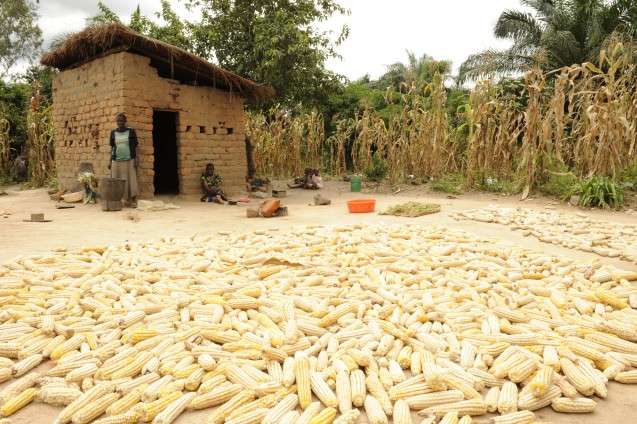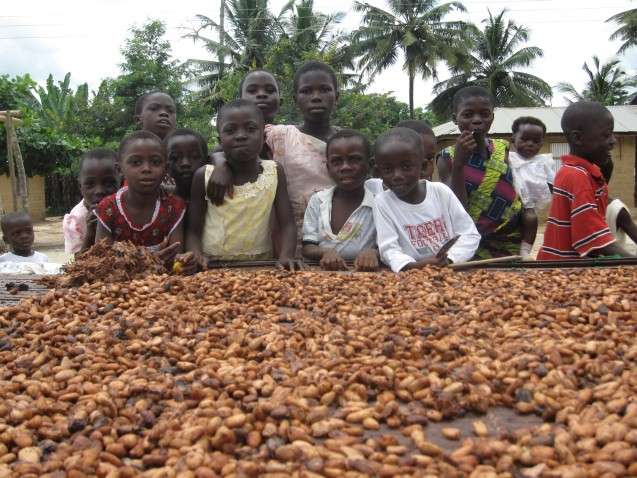Has the green revolution really succeeded?

Over the past 50 years, human population has more than doubled, but cereal-crop production has grown even faster. Mechanization, synthetic fertilizers, new high-yield seeds and other advances in intensified agriculture have enabled us not only to keep up, but to actually reduce world hunger, according to a 2014 UN report. 1960s doomsday scenarios of mass starvation have not materialized. Victory may be declared, at least for now–yes?
No, say researchers in a new paper. Quantity does not equal quality. The researchers, from Columbia University's Earth Institute, point out that the plentiful cereals now grown are generally lower in nutrients per unit weight than old-fashioned crops. Farms are producing more bulk for more people; but many are still not getting enough macronutrients such as protein, nor micronutrients such as iron, needed for good health. The paper, which appears today in the leading journal Science, calls for more realistic metrics to measure and regulate global food supply.
The world's cereal supply has grown by some 220 percent since around 1965, well outpacing a concurrent 130 percent population increase. This is due largely to intensified cultivation of just three crops: rice, wheat and maize. In this time, the area planted in the big three increased from about two-thirds of cereal acreage to nearly 80 percent; yields per acre rose sharply as well. The switch came at the expense of other crops, such as barley, oats, rye, millet and sorghum; these collectively declined from a third of planted area to less than 20 percent.

The problem: many of the older crops carried dramatically higher counts of nutrients per calorie. Thus, the amount of cereal each person must consume to fulfill daily dietary requirements has gone up. For instance, the iron content of millet is four times that of rice. Oats carry four times more zinc than does wheat. And so on. As a result, between 1961 and 2011, the protein, zinc and iron contents of the world's directly consumed cereals declined by 4 percent, 5 percent and 19 percent, respectively.
Cereals remain by far the major component of diet in many countries, especially in India and other fast-growing nations. And, despite the huge food supply, a 2014 study from the International Food Policy Research Institute reports that some 2 billion to 3 billion people are still undernourished, overweight or deficient in micronutrients. In North America, some 12 percent of women of reproductive age are deficient in iron; in west Africa, the figure is 50 percent. It should be pointed out that this is not all due to lower-nutrient crops; starkly unequal distribution of income and food is a major factor.
A separate study published yesterday by researchers at Harvard University suggests that climate change may exacerbate the nutrient shortage. In addition to long-building evidence that warming climate may damage yields of many crops, the new study finds that rising carbon dioxide in the air will cause many plants to take up less zinc. The element is vital for human immune function, and deficiencies could lead to increases in many diseases.
"We need to use land efficiently to produce nutritious food–not just larger quantities of food," said the Columbia study's lead author, Earth Institute professor Ruth deFries. "The current metrics of agricultural production tell us only the tons or calories per hectare. They just don't account for nutrition."
The authors say that more advanced crop metrics that include nutrient content would help promote food systems with mixes of nutritious crops, as well as biofortified crops and better management of soil fertility. They say that such metrics would work on all scales, from management of individual fields and farms, to national policies that would promote a healthy mix of crops, to the global scale, where demand and supply projections would account for all factors going into food.
More information: "Metrics for land-scarce agriculture." Science 17 July 2015: DOI: 10.1126/science.aaa5766
Journal information: Science
Provided by Columbia University


















